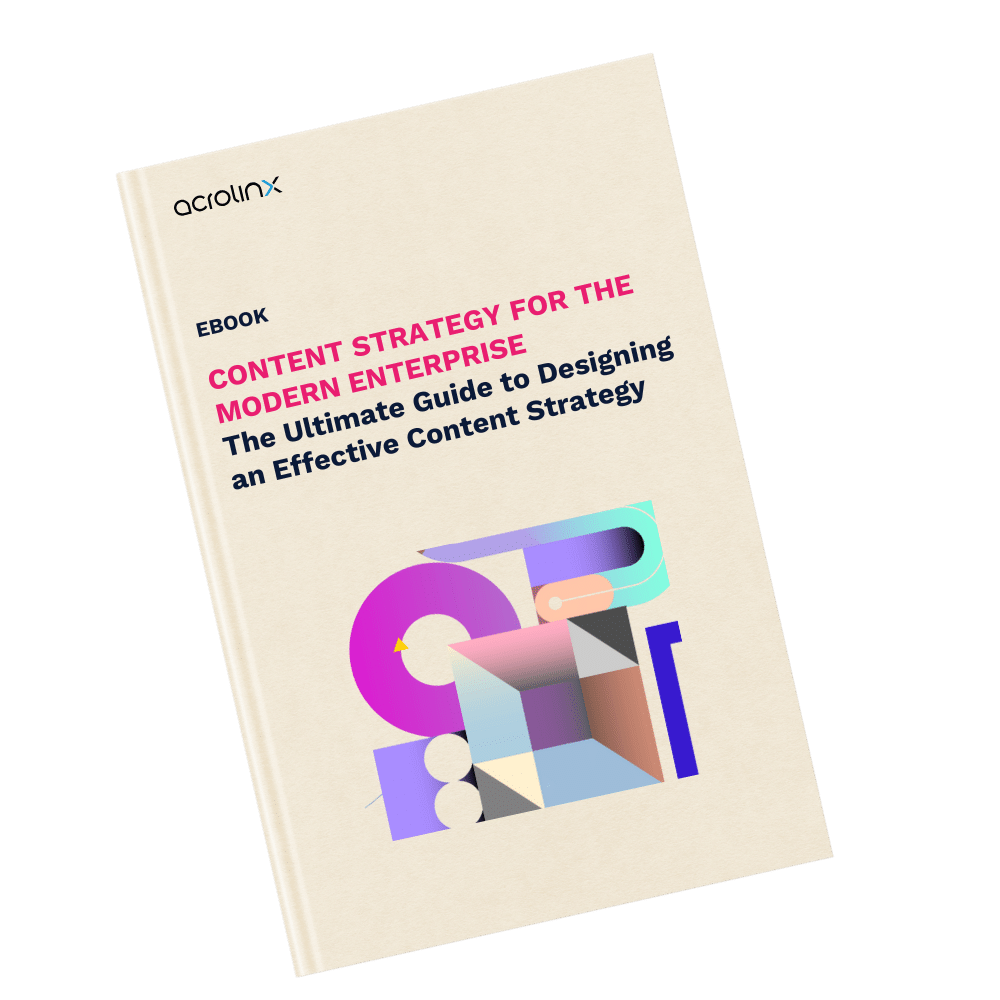A Complete Guide to Content Creation and Marketing for Digital Success

Digital marketing refers to the use of online platforms and digital technologies to promote products, services, or brands to a targeted audience. At its core, content creation and marketing play a crucial role in shaping effective digital strategies. As you’ll soon read, digital marketing encompasses various approaches, each relying on high-quality content to drive engagement and achieve business goals. This blog will dive into each of these digital marketing strategies, offering insights into how to enhance them with better quality content that drives engagement and meets your business goals. We’re not just talking about content marketing (although we’ll cover that too). We’re talking about all areas of marketing: digital marketing, product marketing, demand generation, customer marketing, social media, and partner marketing.
Marketing and content creation: a perfect partnership
Every aspect of marketing relies on content to engage and motivate your target audience. So content creation is an important topic for any marketer who wants to create great content. But if you want to create effective content, it has to be high to contain a few critical qualities.
Marketing content guidelines: What makes content resonate?
Content fuels the customer experience. And when it comes to marketing, it powers conversions. Whether that’s through email and landing page copy, blog posts, brochures, eBooks, website content, or social media posts. But in order for that content to be successful, it should be:
- Clear and easy to understand
- Written in your brand tone of voice
- Correct in terms of grammar and spelling
- Accurate in its use of brand terminology
- Consistent across different content types
- Inclusive of all people
- Scannable and readable
Clear, inclusive, and on-brand content resonates with your audience — it engages people and motivates them to take action. We know that it’s challenging to maintain those elements across all areas of marketing in day-to-day content creation. Especially when the subject matter can vary and marketers are spread out across different locations. That’s why you need a robust content strategy that’s manifested through a content style guide.
| If you want to learn more about content marketing strategy and content style guides, check out these helpful blogs: Turn Your Content Marketing Strategy Into A Content Marketing Success What’s a Content Style Guide and Why Your Company Needs One The Link Between Content Guidelines and Great Business Outcomes |
What’s more, you can harness the power of content governance software to make sure that each piece of content, regardless of its type or who created it, is fit and ready to perform — and in line with your content strategy. But before we discuss that, let’s dive into the different areas of marketing and align them to the key content creation qualities they should focus on.
Types of digital marketing and their role in content creation
Content marketing strategy: why tone of voice matters
Content marketing refers to the creation, publishing, and distribution of content materials, such as blog posts, eBooks, guides, and videos. And although content marketing doesn’t aim to explicitly promote your brand, it does intend to stimulate interest and awareness in your products or services.
Many enterprises engage in content marketing because it helps drive great business results. The Content Marketing Institute says that successful content marketing:
- Increases sales through fueling demand for products and services
- Saves costs by targeting “subscribers” instead of traditional forms of advertising
- Increases customer loyalty by letting them get to know, like, and trust your brand
These results are only possible though when your content creation focuses on producing fit content marketing materials. In terms of your content marketing strategy, that means your content needs to resonate with your audience and inspire them to take action — and that begins with having a strong brand tone of voice, whether you’re writing blog posts or white papers.
Here at Acrolinx, we’ve written extensively about the importance of tone of voice across all forms of content creation — not just for content marketing. If you’re just getting started on your tone journey, or simply looking to refresh it, check out our in-depth Watch Your Tone eBook to learn how to create and maintain your brand tone of voice.
Demand generation marketing and content clarity
Demand generation marketers are concerned with all things related to acquiring customers. While aiming to generate demand for your product or service, they also nurture ideal prospects into customers, and work to retain them.
What’s more, demand generation’s focus on data-driven decisions and alignment with sales, makes them experts on conversions. And the best way to get your audience to convert is to make sure your message is clear and concise.
Fit and effective content for demand generation marketing, stuff like landing pages and targeted campaigns, is short, engaging, and to the point.
So content that prioritizes clarity helps improve conversion rates by:
- Capturing the attention of the reader
- Conveying the key message quickly and clearly
- Motivating the reader to take action
Excessive and unnecessary words (particularly those pesky adjectives) just dilute what you’re trying to convey. They give your audience more time to think about taking action instead of connecting immediately with your main message. Rambling, unclear content also impacts reader comprehension, as an American Press Institute report demonstrates:
8 words or less, readers understood 100 percent of the information. 14 words long, readers understood 90 percent of the information. 43 words or longer, reader comprehension drops to less than 10 percent.
Demand generation content creation prioritize clarity or else you risk your audience not understanding what action you want them to take. And it’s crucial that no matter who’s reading your content, all readers should take away the same message.
Product marketing content: the role of accurate terminology
Describing what your product or service is, and the value it can provide your customers, is a fundamental part of marketing. And product marketing is the bridge that connects product management to marketing.
Ranging from sales enablement and product positioning, product marketing relies on content to express lots of information. And the most important aspect of product marketing content creation is making sure you use correct brand terminology. It may sound simple, but using the right words and phrases — that are up to date with your current brand standards — is crucial if you want to tell a clear story about your product.
It may sound simple, but using the right words and phrases — that are up to date with your current brand standards — is crucial if you want to tell a clear story about your product.
When a company doesn’t use its preferred words and phrases in the right places and at the right times, it can lead to confusion and brand erosion, while slowing down time to market. It can also make translation a more time-consuming and costly process.
Sophisticated, technology-driven terminology management leads to:
- Consistent internal and external communication
- Quick and cost-effective translation and localization
- Satisfied customers who understand your product or service
- Successful product launches
Consistent terminology delivers a smooth buyer journey for your prospects and customers and, ultimately, builds trust in your brand.
Interested in learning more about how terminology management can reduce your translation costs?
Acrolinx customer, Philips Healthcare, discusses how they harvest the power of terminology to create clear and concise content in any language in the Content Insiders podcast. Learn how they do it and why terminology matters so much to them in episode seven.
Customer marketing content: why inclusive language matters
Customer marketing covers any marketing activity that’s aimed at your current customers. These efforts focus on customer retention, boosting brand loyalty and advocacy, and reducing customer churn.
As such, customer marketing content can take many different forms. Ranging from newsletters to targeted guides and eBooks. But regardless of the content type, inclusive language should be at the core of your content creation.
More than ever, the future is focused on holding ourselves accountable for the way history has rejected, oppressed, and excluded certain members of society. And that starts with the language we use. So, when it comes to creating any type of content, marketing or otherwise, inclusivity is a vital component.
Inclusive language includes many different aspects, such as:
- Proper acknowledgment of people and cultures
- Intentional language
- People-first language
- Respectful language
- History-conscious language
- Accessible language
- Diverse and accurate representation
- Non-stereotypical language
- Gender neutral language
When communicating with your customers, inclusivity should be at the heart of everything you do. And technology can help you achieve this. Content governance software guides writers to craft inclusive content by highlighting the history and connotation of exclusionary language. In essence, technology can be both an educational tool and a guide to help marketers create more inclusive content.
It’s time to bring inclusivity into the core of your content strategy!
If you want to learn more about the different aspects of inclusive language (and how to do them best), the role of design in inclusive content, and the capabilities of diversity and inclusion technology, make sure to check out the Acrolinx Inclusive Language Guide.
Social media marketing content strategy: the importance of correctness
The clue’s in the name, and (not surprisingly) social media marketing content strategy covers all marketing activities on social media—such as social media posts and advertising campaigns.
Social media content is often only short captions that seek to grab the attention of social media users. But these quick snapshots of your company have to be correct — in terms of grammar and spelling. Of course, all content has to be correct, but when you only have one or two sentences to engage your audience, you really don’t want them to get hung up on the fact you said “your” instead of “you’re” or “that” instead of “which.”
We all know that perfect grammar is a fundamental pillar of great content. But sometimes we all need a little reminder about the formulations of those tricky prepositions or subordinating conjunctions. Or about when to use a colon or a semicolon.
That’s why we created the Grammar Guide for Busy People! This is the ultimate companion to support all your content creation needs. This is one guide you’ll keep returning to time and time again!
Partner marketing: the need for scannable content
Partner marketing involves all the collaborative work done between your marketing team and your partner’s. These campaigns are beneficial to both parties and can be a great way to raise brand awareness and drive sales, since partner marketing gives you access to a large audience of new potential customers.
But it’s important to remember, when combining the efforts of two (or more) companies, content has to be scannable and easy to understand. Coming together and combining forces can be powerful, but it can also be confusing if you’re not presenting that information clearly.
What does it mean for content to be scannable? Well, scannability is when you structure your content so your audience can find and understand your message quickly and efficiently.
To make content scannable, you need to be crafting content that:
- Has concise paragraph messaging and doesn’t have large blocks of dense text
- Includes easy to understand lists
- Keeps tables short and easy to read
- Has a clear focus and only covers the relevant topics
And when you create scannable content, you’ll see savings in printing, translation, and writing costs!
How Acrolinx enhances marketing content management
The better your content is, the more likely it is to achieve its desired impact.
The Acrolinx content governance software helps marketing teams create content that’s ready to perform. From day one, the platform maximizes the value and impact of your content by boosting its overall quality and effectiveness, while saving you time and money to reinvest in higher-value marketing activities.
As a marketing content software, Acrolinx ensures your strategy aligns with your content goals, regardless of the department, content type, or target audience. It also:
- Integrates seamlessly into your enterprise (with over 50 integrations)
- Works no matter who’s writing content
- Explains why certain words aren’t inclusive (educational) and suggests replacements for non-inclusive terms
- Guides content creators to meet your company’s content guidelines (including clarity, consistency, and scannability) through the Acrolinx Sidebar
- Aligns all content creators to use the same brand terminology
- Analyzes the emotional appeal of content
- Tracks and measures your content’s improvement over time with Acrolinx Analytics
- Helps govern all digital content with insights into its fitness and performance through The Content Cube
Acrolinx is the marketing content software your team needs to create content that engages, motivates, and delivers results. If you want to learn more about how Acrolinx can help your enterprise, download our Marketing Playbook for Content Creation or let’s talk.
Are you ready to create more content faster?
Schedule a demo to see how content governance and AI guardrails will drastically improve content quality, compliance, and efficiency.

Charlotte Baxter-Read
Lead Marketing Manager at Acrolinx, bringing over three years of experience in content creation, strategic communications, and public relations. She holds a Master’s degree from the John F. Kennedy Institute, at Freie Universität Berlin, and a Bachelor's degree from Royal Holloway, University of London. Charlotte, along with the Acrolinx Marketing Team, won a Silver Stevie Award at the 18th Annual International Business Awards® for Marketing Department of the Year. She's a passionate reader, communicator, and avid traveler in her free time.





